

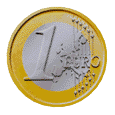
|
|
Euro coins will have a common face and
a national face; the
designs for the common face were approved by the European Council in June 1997,
following an EU-wide design competition. The designs for the common face represent
the European Union in a range of forms: the first three coins (1, 2 and 5 cents)
show Europe situated in the world; the 10, 20 and 50 cent coins show Europe
as a collection of nations; the 1 and 2 euro coins show the European Union without
borders.
The national face will in all cases show the 12 stars of the EU flag and the
year. There will also be a national symbol. In Ireland's case, this will be
the harp and the word "Éire". The design for the Irish face
was produced by Mr Jarlath Hayes.
There will be 100 cent to the euro and coins will be issued in eight denominations:
1, 2, 5, 10, 20 and 50 cent, and 1 and 2 euro as shown below. The coins are
not illustrated in actual dimensions.
 |
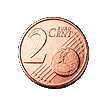 |
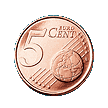 |
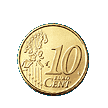 |
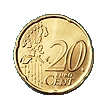 |
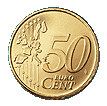 |
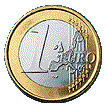 |
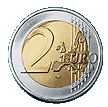 |
 |